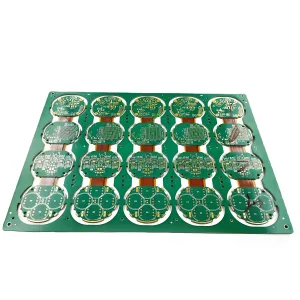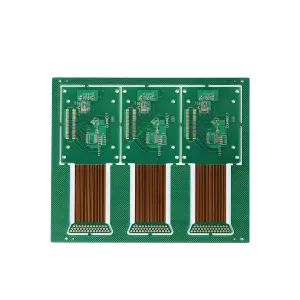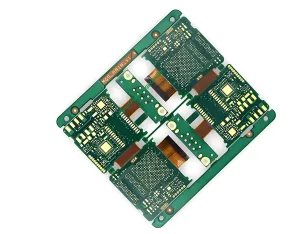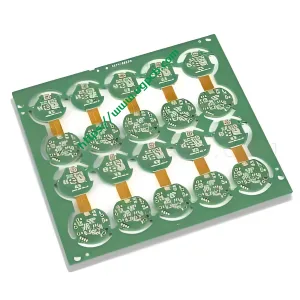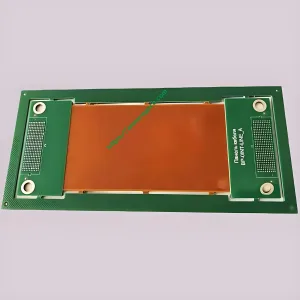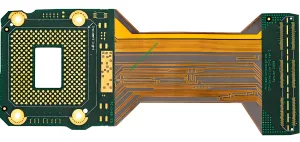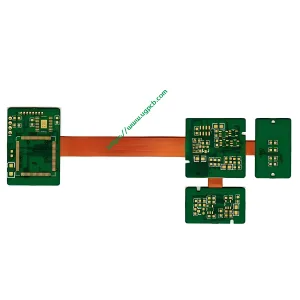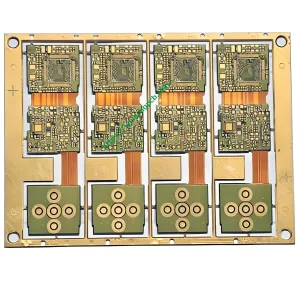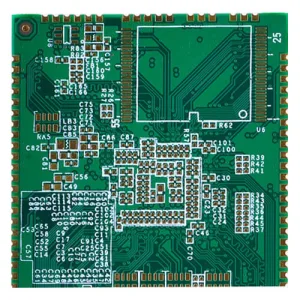R-FPCBの高密度配線構造への応用 (HDI) 自動車用 PCB への R-FPCB 技術の急速な発展が大きく促進されました. 同時に, PCB技術の開発と改善に伴い, R-FPCBは開発および研究されており、広く使用されています, R-FPCBの世界的な供給は将来的に大幅に増加すると予想されます. 同時に, R-FPCBの耐久性と柔軟性により、自動車電子分野でのアプリケーションにも適しています。, リジッドPCBの市場シェアは徐々に侵食されている.
PCBメーカーは、R-FPCBが軽いことを認識しています, 薄い, そしてコンパクト, また、最新のポータブルエレクトロニクスおよび自動車用エレクトロニクスに特に適しています。これらの最終製品は現在、R-FPCBの出力を後押ししています. したがって, 業界関係者は、R-FPCB が今後数年間で他の種類の PCB を上回ると予想しています。.
R-FPCB製品は良いのですが, 製造の敷居が若干高い. あらゆる種類の PCB の中で, R-FPCB は過酷なアプリケーション環境に対して最も強い耐性を持っています, カーエレクトロニクスメーカーに支持されています. R-FPCB は、リジッド PCB の耐久性とフレキシブル PCB の適応性を兼ね備えています。. PCB 企業は、需要が高まり続ける大きな機会を最大限に活用するために、生産全体に占めるこのような PCB の割合を増やしています。. 電子製品の組み立てサイズと重量を削減する, 配線ミスを避ける, 組み立ての柔軟性を高める, 信頼性の向上, さまざまな組み立て条件下での 3 次元組み立ての実現は、電子製品の開発の増加にとって避けられない要求です。. 三次元組立ニーズに応える配線技術, 光など, ライト, そして柔軟性, 自動車エレクトロニクス業界でますます広く使用され、評価されています.
R-FPCBの応用分野は拡大し続けています, フレキシブル基板自体も常に進化しています, 片面フレキシブル基板から両面フレキシブル基板へなど, マルチレイヤーおよび剛性の柔軟性のないボード, 等, 細い線の幅/ピッチ, インストールなどのテクノロジーの適用と柔軟な基質自体の材料特性は、柔軟なボードの生産のためのより厳しい要件を提案しました, 下地処理など, レイヤーの位置合わせ, 寸法安定性制御, そして除染, 小穴メタライゼーションと電気メッキの信頼性, 表面保護コーティングも, 等. 高く評価されるべきである.
R-FPCBの設計と生産プロセス
R-FPCB は、PCB 上に 1 つ以上のリジッド領域と 1 つ以上のフレキシブル領域を含む PCB を指します。. 強化層付きフレキシブル基板やリジッドフレックス複合多層基板などの種類に分けられます。.
R-FPCBの材料選択
R-FPCBの設計・製造プロセスを検討する場合, 十分な準備をすることが非常に重要です, ただし、これにはある程度の専門知識と必要な材料の特性の理解が必要です。. R-FPCB用に選択された材料は、その後の生産プロセスとそのパフォーマンスに直接影響します.
ugpcbはデュポンを選択します (AP無接着剤シリーズ) ポリイミドフレキシブル基板. ポリイミドは柔軟性に優れた素材です, 優れた電気特性と耐熱性, しかし、それはより大きな吸湿性を持ち、強いアルカリに耐性がありません. 接着層のない基材を選択した理由は、誘電体層と銅箔の間の接着剤のほとんどがアクリル系であるためです。, ポリエステル, 修正エポキシ樹脂およびその他の材料, また、修正されたエポキシ樹脂接着剤は柔軟なポリエステル接着剤ですが、柔軟性が良くなりますが、耐熱性が低い. アクリル系粘着剤も耐熱性は良好ですが、, 誘電特性と柔軟性, それらは考慮する必要がある. ガラス転移温度 (TG) プレス温度が比較的高い (約185℃). 現在のところ, 多くの工場では日本語が使われています (エポキシ樹脂シリーズ) R-FPCBを製造するための基板と接着剤.
リジッド PCB の選択には特定の要件もあります. UGPCBは、最初に低コストのエポキシ接着剤ボードを選択しました, 表面が滑らかすぎてしっかりと固執することができなかったからです, そして、特定の厚さでFR-4.G200およびその他の基質を使用することを選択しました. 銅はエッチングされました, しかし、FR-4.G200コア材料とPI樹脂システムの違いにより, Tg と CTE に互換性がありませんでした. 熱衝撃後, リジッドフレックスジョイント部の歪みが大きく、要件を満たせなかった, したがって、PI樹脂シリーズの剛性が最終的に選択されました. 材料は、p95ベース材料でラミネートできます, または、単にp95 prepregでラミネートします. このようにして, 熱衝撃後の反り変形を避けるために、適合樹脂システムのリジッドフレックス PCB ボードをラミネートできます。. 現在のところ, 多くの PCB 基板メーカーは、特に R-FPCB 用にいくつかのリジッド PCB 材料を開発および生産しています。.
フレキシブル基板とハード基板間の接着部に, No flowを使用するのが最善です (低流量) プレス用プリプレグ, その小さな流動性は、柔らかくて硬い移行領域に非常に役立つからです. 接着剤オーバーフローのために移行領域を作り直す必要があります。. 現在のところ, PCB原材料を生産する多くの企業がこの種のPPフィルムを開発しており、構造的要件を満たすことができる多くの仕様があります. 加えて, ROHSの顧客向け, 高ガラス転移温度, インピーダンスおよびその他の要件, また、原材料の特性が最終的な要件を満たすことができるかどうかにも注意を払う必要があります, PCB材料の厚さの仕様など, 誘電率, TG値, および環境保護要件.
 UGPCBのロゴ
UGPCBのロゴ


